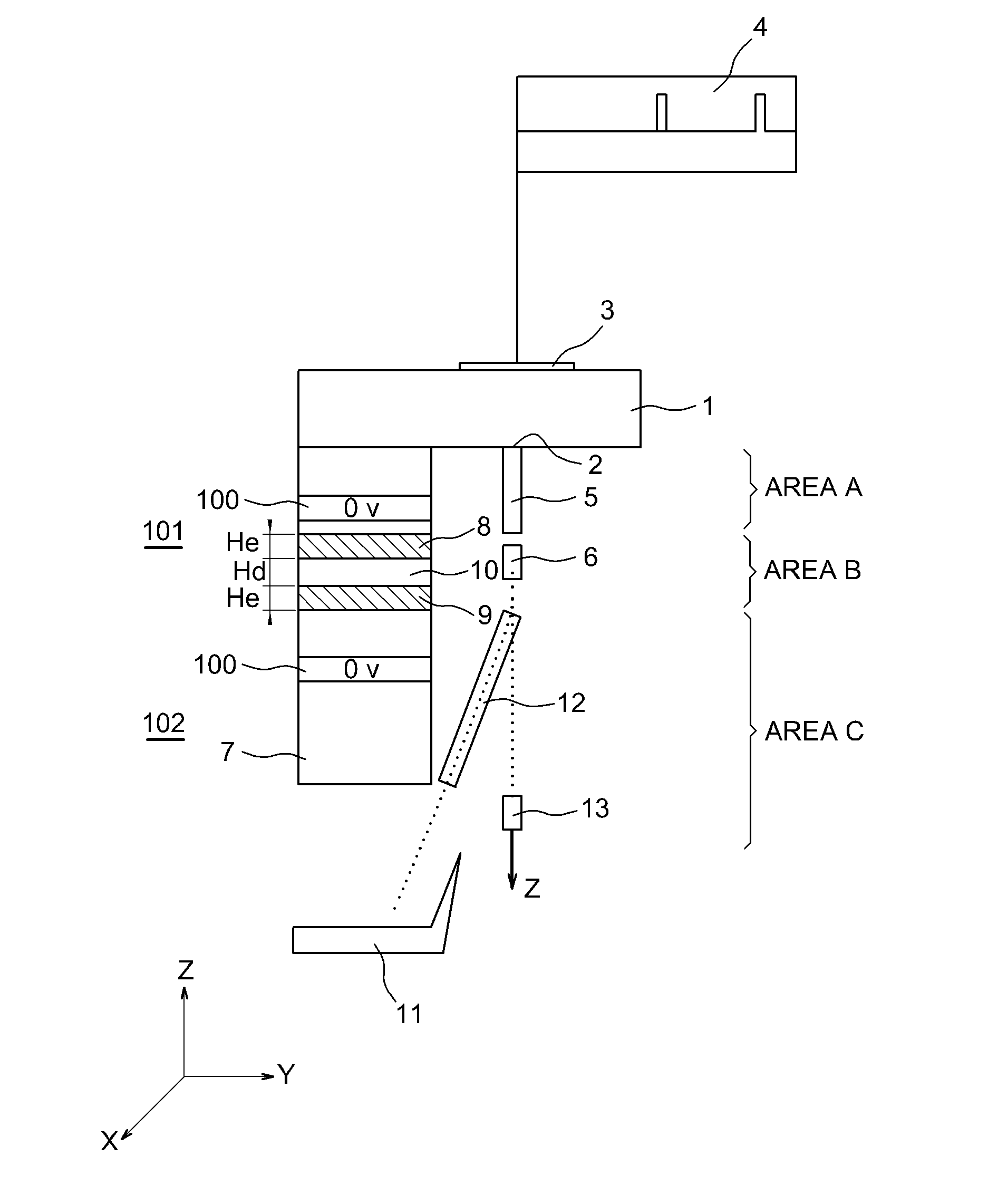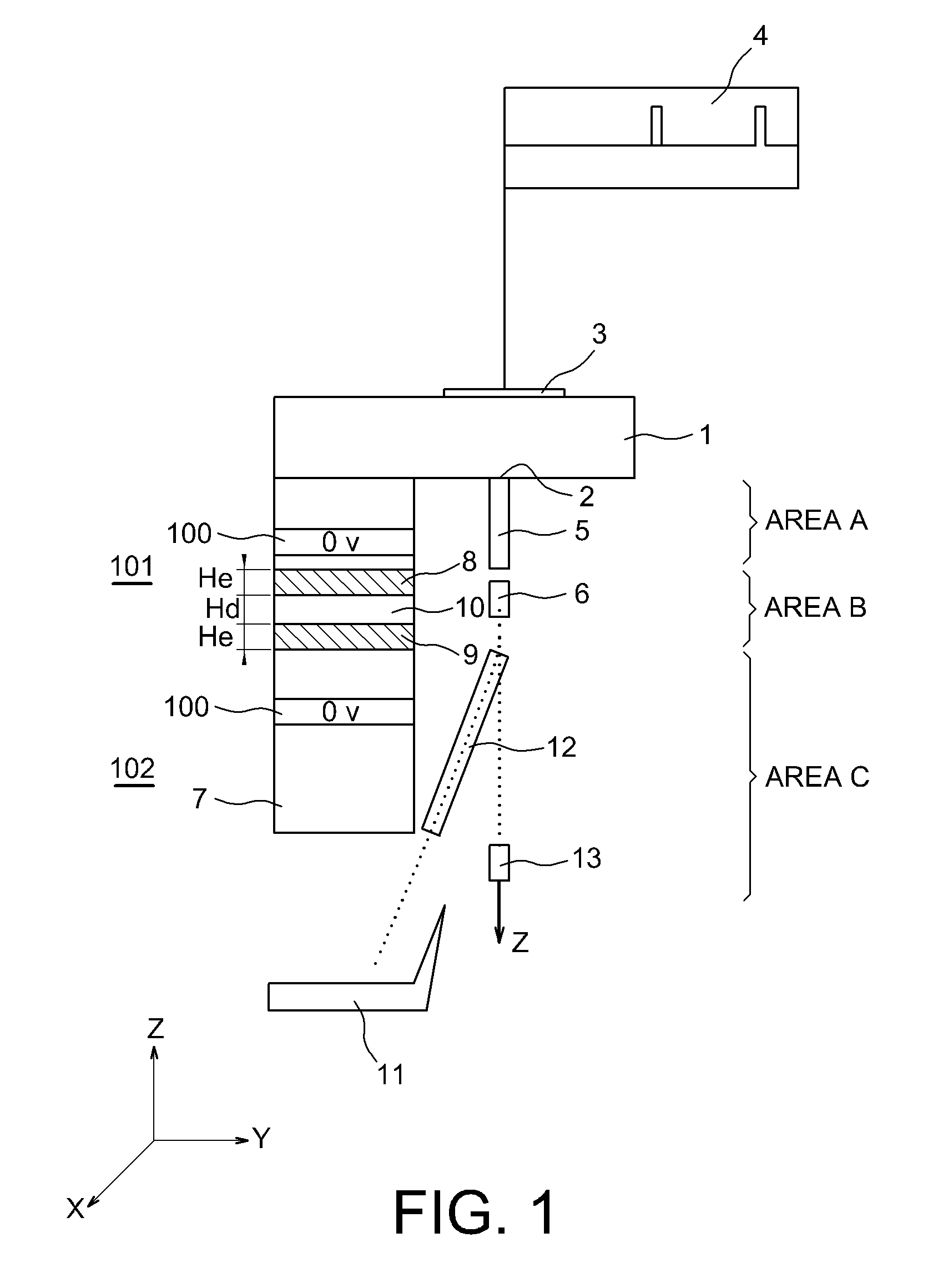Inkjet printer operating a binary continuous-jet with optimum deflection and maximised print speed
- Summary
- Abstract
- Description
- Claims
- Application Information
AI Technical Summary
Benefits of technology
Problems solved by technology
Method used
Image
Examples
Embodiment Construction
[0073]FIGS. 1 and 2 have been commented on in the preamble.
[0074]The references in FIGS. 1 and 2 designating the same elements have been repeated in FIG. 3.
[0075]FIG. 3 shows a preferred embodiment according to which the block of electrodes 100 comprises two pairs 81, 91 and 82, 92 of individual height He and separated from each other by dielectrics 101, 102 of identical height Hd.
[0076]The block 100 has a curved profile P that enables the deflected jet segments 12 to be at a substantially constant distance from the facing electrodes over the entire height of the block.
[0077]FIG. 4 presents the change in a deflected jet segment whose length tends naturally to decrease under the action of the surface tension 12A, 12B, 12i.
[0078]Every end 200 of a given jet segment (12C for example) undergoes a return force (capillary force) that mutually brings the ends together in order in the end to give a spherical shape to the jet segment, initially cylindrical in shape. The length of the segment...
PUM
 Login to View More
Login to View More Abstract
Description
Claims
Application Information
 Login to View More
Login to View More - R&D
- Intellectual Property
- Life Sciences
- Materials
- Tech Scout
- Unparalleled Data Quality
- Higher Quality Content
- 60% Fewer Hallucinations
Browse by: Latest US Patents, China's latest patents, Technical Efficacy Thesaurus, Application Domain, Technology Topic, Popular Technical Reports.
© 2025 PatSnap. All rights reserved.Legal|Privacy policy|Modern Slavery Act Transparency Statement|Sitemap|About US| Contact US: help@patsnap.com



